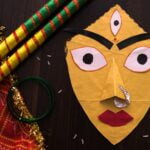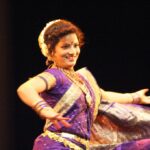I’m an expert and researcher on folk dance of Gujarat, India. I’m excited to share my knowledge with you about this vibrant art form that has been passed down through generations.
Folk dances have a rich history in Gujarati culture, dating back many centuries. They are the expression of joy for the people living in rural areas, where music and dancing bring communities together.
These dances celebrate different festivals and special occasions such as weddings or engagements. In fact, some of these traditional dances are still performed today!
Each dance is unique and carries its own meaning – from paying homage to deities to celebrating everyday life events.
Types Of Folk Dance
I had the good fortune of coming across Gujarati folk dances when I least expected it – and what an experience that was! It felt like a magical world, filled with vibrant colors, graceful moves, and traditional music.
After further investigation into this captivating art form, I discovered the diverse range of dance styles rooted in Gujarat’s ancient culture. From Garba to Dandiya Raas, each style has its own unique movements, steps and costumes associated with it. The cultural roots of these dances can be traced back to different religious beliefs; some involve worshiping deities while others are performed during festivals or special ceremonies.
The costumes worn for each of these dance forms is also quite distinct from one another. Each costume usually consists of bright colors complemented with intricate embroidery work as well as accessories such as jewelry pieces and headgears. While men typically wear long-flowing kurta pajamas along with waistcoats, women prefer lehengas teamed up with cholis & dupattas adorned heavily with zari work or mirrorwork designs.
Traditional musical instruments such as dholaks accompany most performances which add liveliness to the atmosphere created by dancers swaying gracefully to their beats.
The combination of colorful costumes & soulful music make folk dances of Gujarat truly mesmerizing experiences that have been passed down through generations over centuries. Knowing more about them only adds deeper layers to our understanding and appreciation for this beautiful art form.
Traditional Costumes & Music
When it comes to folk dance of Gujarat, traditional costumes and music play a big part in the overall experience. Regional costumes are vibrant and colorful, often featuring intricate embroidery or beadwork that reflect the culture of the region. These outfits come with accessories like headgear and jewelry to complete the look.
Here’s a quick rundown of what people typically wear for their performances:
- Traditional Sari/Salwar Kameez – This is one of the most popular choices for women dancers as it provides comfortability for long duration performance while still looking elegant.
- Kurta Pyjama – Men usually opt for this attire due to its ease of movement and its classic appearance. It can also be accessorized with pieces like turbans or pagdis (head wraps).
- Ghagra Choli – This style has been traditionally favored by female performers due to its light weight material which allows them greater freedom when executing steps. The blouse is decorated with sequins, zardozi work or gota patti designs while ghagras have bright borders and motifs.
Musically, many instruments are used during these dances such as tabla, dholak, sitar, harmonium etc., which add to the rhythmical beats being produced by the feet movements of dancers along with clapping patterns. In addition to this, vocalists accompany each song sung during a performance making it livelier than ever!
All these elements together create an electrifying atmosphere that captivates audiences every time they witness a folk dance show in Gujarat.
Origins & Evolution Of Folk Dance
I’ve been researching the folk dance of Gujarat for years now, and I can tell you that it is a fascinating subject. It has evolved over centuries with influences from many different cultures, making it an incredibly unique form of art.
Much of the folklore stories and stylistic elements are still present today in this dynamic dance tradition. The traditional dances have also adapted to modern influences, creating new forms of expression that pay homage to their cultural roots while incorporating contemporary ideas.
The most popular Gujarati dances include Garba, Raas, Dandiya and Padharo Mhare Desh – all of which feature intricate footwork patterns as well as lively music. These vibrant performances often take place at weddings or other special occasions like Navaratri Festival.
Gujarat’s folk dance culture is deeply ingrained in its history and even more so in its people. This passionate style of dancing helps keep the traditions alive in each generation, allowing individuals to connect with their heritage on a personal level and show appreciation for their culture through artistic expression.
Moving forward into the next section about significance of folk dance in Gujarati culture, we will explore how these ancient practices continue to shape lives today.
Significance Of Folk Dance In Gujarati Culture
Folk dance of Gujarat is a showcase of the vibrant culture and history that exists in this part of India. It is like a kaleidoscope, with each regional variation bringing forth its own cultural symbolism and vibrancy. Some are fast paced and frenzied, while others show delicate grace; some express joyous occasions, while others tell tales of sadness or love.
The folk dances of Gujarat can be divided into two main categories: traditional dances which have been passed down through generations, and those which are more modern interpretations.
Traditional dances often feature intricate hand gestures and footwork to convey stories from mythology or folklore. These include Garba, Dandiya Raas, Kutchi Ghodi Dance, Tera-Taali and Bhavai.
Modern interpretations incorporate elements from other Indian classical as well as western styles of dance – such as Bharatanatyam, Kathakali, Bollywood, Jazz, Tap, Contemporary, Ballet, etc., all reflecting changes in society over time.
This combination has resulted in new forms combining traditional steps with innovative choreography to create unique performances that captivate audiences across the region.
Popular Folk Dance Events In Gujarat
When it comes to folk dance of Gujarat, there are many popular events celebrated across the region. One of the most well-known is Garba celebration which takes place during Navratri and celebrates Hindu Goddess Durga. The festival typically involves people wearing brightly coloured costumes and dancing in circles around a central statue or image of a deity.
During this time, regional styles from all corners of Gujarat come together as participants express their devotion through song and dance.
Another major event that celebrates Gujarati folk dance is Kutch Mahotsav. It is an annual cultural fair held in Bhuj city where artists perform traditional dances with vibrant costumes, music instruments and local culture.

This event attracts musicians and dancers from various districts like Surendranagar, Banaskantha, Patan and Rajkot who showcase their unique style of performing arts such as lavani , garba, dandiya raas. etc., at the venue.
Folk dances are also performed on other occasions such as weddings, festivals and religious ceremonies throughout Gujarat. People dress up in colourful attire specifically designed for these events while they sing along with energetic beats of drums and cymbals.
Not only do these performances entertain guests but they also help perpetuate traditions passed down through generations over centuries.
Frequently Asked Questions
Q1. How Do I Learn To Perform A Gujarati Folk Dance?
A. If you’re interested in learning how to perform a Gujarati folk dance, it can take some time and effort. You may have costs incurred for classes or training materials, so be prepared for that.
Learning the intricate dance techniques of these traditional dances is key – practice makes perfect! If you’re up for it, there are plenty of resources available online as well as through local instructors who will help teach you all the steps and movements you need to know.
Q2. Are There Any Folk Dance Classes In Gujarat?
A. You’re in luck! There are many classes that offer instruction in this traditional art form. The cultural significance of these dances is immense and the costume design adds an extra layer of beauty and charm.
Not only will you be able to partake in a wonderful tradition, but you’ll also be able to gain insight into the culture of Gujarat as well. Classes typically cost around $50 which is incredibly reasonable for all that it entails.
So don’t hesitate any longer; take advantage of your opportunity to learn a Gujarati folk dance today!
Q3. What Is The Average Age Of Gujarati Folk Dance Participants?
A. Well, folks, let me tell you – it’s not as young as people might think! In fact, many cultural influences and traditional dance costumes have been around for centuries so it can be assumed that those participating in these dances are usually quite a bit older.
That’s right; even though folk dancing is known for its vibrant energy and youthful spirit, the truth is that most folk dancers in Gujarat are over 40 years old.
Q4. Are There Any Folk Dance Competitions In Gujarat?
A. There are indeed a number of folk dance competitions in Gujarat, ranging from small-scale local events to larger state-wide festivals.
These events serve as important cultural and social gatherings that celebrate the traditional costumes and dances of the region while allowing participants to showcase their skills and compete for prizes.
Many of these competitions also have an educational component, providing valuable insights into the history and significance of Gujarati folk dance.
Q5. Are There Any Similarities Between Gujarati Folk Dance And Other Indian Folk Dances?
A. When it comes to Indian folk dances, there are many similarities between the Gujarati dance and other traditional dances from across India.
In terms of costumes, dancers typically wear vibrant colors with intricate designs that represent different regions of Gujarat.
Musical instruments used during these performances range from drums and flutes to stringed instruments like sitars.
Additionally, many of the moves seen in Gujarati folk dances are similar to those found in other forms of Indian folk dance such as Bhangra or Garba.
All of this speaks to how connected all indigenous dances in India truly are!
Conclusion
Gujarati folk dance is a beautiful, traditional art form that has been enjoyed by people in this region for generations.
For those of us lucky enough to experience it first hand, we can appreciate the beauty and complexity of these dances.
Watching or participating in one of these dances brings an indescribable joy to our hearts and allows us to connect with our culture on a deeper level.
While there are many similarities between Gujarati Folk Dance and other Indian Folk Dances, the unique style of Gujarat’s movement makes it truly special.
If you ever have the opportunity to take part in a Gujarati folk dance class or competition, I highly recommend doing so!
Not only will you learn something new but you’ll also find yourself immersed in an unforgettable cultural experience – one which may leave your feet sore but your heart full.
Read our latest article about: Essay On Things Fall Apart – 3235 Words
- Sri Lalitha Ashtottara Shatanamavali in Telugu – శ్రీ లలితాష్టోత్తరశతనామావళిః - April 11, 2024
- Sri Durga Kavacham in Telugu – శ్రీ దుర్గా దేవి కవచం - April 10, 2024
- Shivananda Lahari in Telugu – శివానందలహరీ - April 9, 2024
